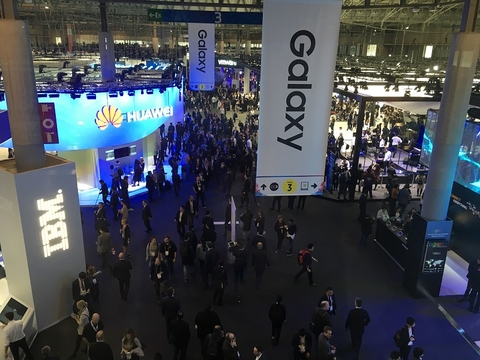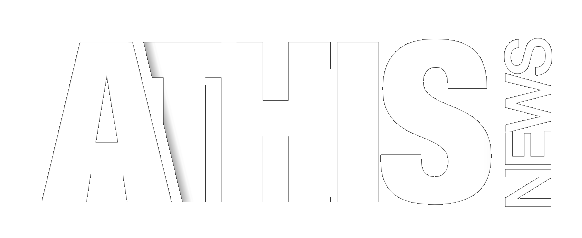A record-breaking 108,000 people descended on Barcelona last week for the 2017 Mobile World Congress, marking a 7% increase over the previous year. More than 2,300 exhibiting companies participated in the four-day conference, showcasing their wares over nearly 1.8 million square feet of space.
Now that the dust has cleared and the jet lag has waned, the FierceWireless editorial team offers our thoughts on the best and worst of the show, as well as what to expect in wireless throughout the rest of the year and at next year’s show.
The best:
5G gets much more real
Just as a group of vendors and operators pushed for anacceleration of specifications related to 5G, a bevy of 5G-related announcements poured out of MWC 2017 to make the yet-to-be-approved standard appear closer than ever.

A record-breaking 108,000 people descended on Barcelona last week for the 2017 Mobile World Congress, marking a 7% increase over the previous year.
Of course, there were plenty of “firsts” to be claimed at MWC 2017. Nokia announced its FIRST 5G string of products. Samsung Electronics unveiled an end-to-end 5G product portfolio that it promises will be commercially ready by the end of this year. Ericsson announced 5G New Radio (NR) trials with Qualcomm and customers NTT DoCoMo, Telstra and Vodafone.
In the U.S., Verizon is conducting pre-commercial fixed wireless 5G trials in 11 markets, and it aims to launch commercial 5G fixed wireless in 2018. AT&T is also conducting trials in the first half of 2017, including with residential customers in Austin, Texas, where DirecTV Now video is being streamed over a fixed wireless 5G connection.
Some 25 mobile operators around the world have announced they are lab testing 5G and among those 12 report having progressed to field testing. An additional four operators have announced their plans for 5G trials, according to Viavi Solutions. Operators and vendors also reiterated the need for low-, mid- and high-band spectrum to meet their 5G needs. The most commonly trialed wavelength is 28 GHz, but 15 GHz is being used in trials by seven operators, Viavi reports.
If tests and trials are not enough to solidify 5G, perhaps dollar signs will provide evidence of its maturity. The GSMA forecasts 5G connections will reach 1.1 billion by 2025, accounting for about one in eight mobile connections worldwide by this time, and overall operator revenues are forecast to grow at a compound annual growth rate (CAGR) of 2.5% to reach $1.3 trillion in 2025.

Phones galore!
As expected, Apple and Samsung largely sat out this year’s Mobile World Congress. But, somewhat surprisingly, other vendors nonetheless brought a wide range of new interesting and innovative devices to the show—an indication that the wireless industry doesn’t need to rely on the world’s two largest smartphone vendors for the latest and greatest.
Specifically, at this year’s MWC, TCL, HMD Global, Motorola and others showed off new wares that are unlike anything on the market. TCL, for its part, unveiled the results of its licensing agreement with BlackBerry; the company’s KeyOne sports a Qwerty keyboard like the BlackBerrys of yesteryear but coupled with the Android operating system of today. Similarly, HMD Global unveiled the results of its licensing agreement with Nokia via the new Android-powered Nokia 3, 5 and 6, as well as the throwback Nokia 3310.
And Lenovo’s Motorola released a new version of its Moto G phone but also doubled down on its modular approach to the smartphone space through its Moto Mod snap-on accessories. Moto Mods allow Moto Z users to add things like better cameras and more powerful batteries to their devices by snapping onto various back covers. Motorola executives promised to release a range of new Mods to the market in the coming months, including Mods from other vendors.
Of course, Samsung and Apple likely won’t remain silent for long. Although Samsung didn’t release its next Galaxy S device at this year’s MWC, it is expected to announce the gadget at a New York event later this month. But the phone announcements that did take place at this year’s MWC indicate that some of the market’s smaller players may well be able to move the needle in the global smartphone market.
The worst:
Is VR the only thing to demo nowadays?
You didn’t have to go far to find Augmented Reality/Virtual Reality (AR/VR) demonstrations at MWC 2017. They were everywhere: Nokia, Intel, Qualcomm, Samsung—the list goes on and on.

Samsung Electronics announced the Samsung Gear VR with Controller powered by Oculus, the company’s first-ever Gear VR headset with a controller. Qualcomm Technologies showed off a prototype as part of its reference design for a second generation of VR headsets that don’t have to be connected to a PC. Nokia had all kinds of VR available at its booth to anyone who wanted to experience what it’s going to be like over a 5G connection in the home.
Granted, VR/AR technology is rapidly advancing and there was no shortage of MWC attendees interested in trying out the latest and greatest gadgets. But aren’t there other equally exciting things that wireless can do in 5G? We also saw plenty of telematics/M2M/Internet of Things, but those didn’t go terribly above and beyond what many already imagine doing with 4G networks.
Surely before the next MWC rolls around, engineers and marketers can put their collective skills together and come up with some yet-unimagined use cases that will knock the socks off even the most seasoned MWC attendees.
Where’s the real growth in the IoT?
Attendees seeking use cases for the IoT didn’t have to look far. The floor was teeming with a vast array of connected gadgets and platforms, from cars to home security and entertainment systems to, yes, transmitters that are glued to the heads of sealsto track their movements. Despite all the cool gadgets (novelties aside) and hypothetical scenarios, it’s difficult to gauge just how much traction the IoT is gaining in the real world, though.
That isn’t to say that the IoT is treading water, of course. Gartner earlier this week said 8.4 billion “connected things” will be in use around the world this year, up 31% over last year, and 20.4 such devices will be active by 2020. And as CCS Insight pointed out, the IoT platform provider Jasper has seen its enterprise customer base grow from 3,500 to 9,000 since being acquired by Cisco just a year ago, and the number of connected devices it manages more than doubled from 17 million to 40 million.
The IoT clearly has enormous potential, but it still largely feels like it’s in an experimental stage. As CCS noted, Jasper’s progress “echoes our main finding in the IoT space at Mobile World Congress 2017: there were fewer large announcements about IoT technology, but many more examples of companies just getting on with using it.”
Indeed, the IoT still faces some major challenges as it begins to mature beyond its infancy. The space is fragmented by a variety of different networks and technologies that can be confusing for businesses looking to leverage its power. The wireless industry must continue to work to explain the value of the IoT to the broad variety of markets that stand to benefit from it. And complex partnerships and business models are still being developed that can reward every player in the value chain.
“The use cases for deploying IoT are increasing, the platform layer is becoming more mature, people are starting to think about standardizing functions for scale, $50,000 pilots are turning into $500,000 deployments, large scale industrial and smart city initiatives are under way,” Chetan Sharma wrote. “However, some of the basic issues haven’t changed much especially around security, privacy, and identity. Lot of work to be done. Lot of opportunities.”
What’s next?
This year’s event provided the typical annual avalanche of press releases and other announcements, but we didn’t see the blockbuster developments or potentially disruptive initiatives we’ve come to expect from Mobile World Congress. Instead, we heard about incremental progress toward 5G, all kinds of potential scenarios for the IoT, and some interesting—if not groundbreaking—new handsets from relatively smaller vendors.
The rest of the year in wireless could be particularly eventful, however, especially in the U.S. The FCC’s incentive auction of 600 MHz will wrap up in the coming weeks, and analysts expect to see a significant increase in M&A activity once the agency’s anti-collusion period ends, capping the event. Speculation over potential tie-ups has only increased since the election of Donald Trump, whose administration is expected to demonstrate a far lighter regulatory touch than we saw when Barack Obama was in the White House.
Much of that speculation has focused on a potential merger between T-Mobile and Sprint in a deal that would see the U.S. market consolidate around three major wireless carriers. But a variety of other deals could occur as well: Cable companies such as Comcast and Charter are positioning themselves to enter the wireless market and could partner with an existing carrier to join the fray.
Dish Network, meanwhile, has disclosed plans to tap its spectrum by building a narrowband IoT network and could join forces with an existing carrier to offer consumer services as well. And wireless operators continue to eye digital media companies as the U.S. mobile market has become brutally competitive.
The relative lack of huge news coming out of this year’s MWC doesn’t necessarily signal an unhealthy wireless market, of course. While growth in the U.S. and other more mature regions has flattened, enormous opportunities remain in some major emerging markets such as India and Brazil. New technologies and architectures are enabling carriers to better leverage their existing LTE networks, increasing capacity and improving data speeds. And next year’s event is sure to showcase 5G as operators begin to deploy fixed wireless service and look to fully mobile 5G offerings.
Perhaps the most notable takeaway from MWC 2017, though, is that wireless is obviously not the siloed industry it once was. Wireless now permeates massive markets such as media and the automotive industry, and it will gradually become an underpinning of other segments including manufacturing and agriculture. Given such a broad reach, it might be logical that no blockbuster news emerged from a show dedicated to mobile. And next year’s MWC may not hold much in the way of blockbuster announcements as well.































